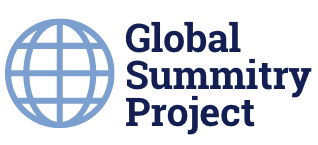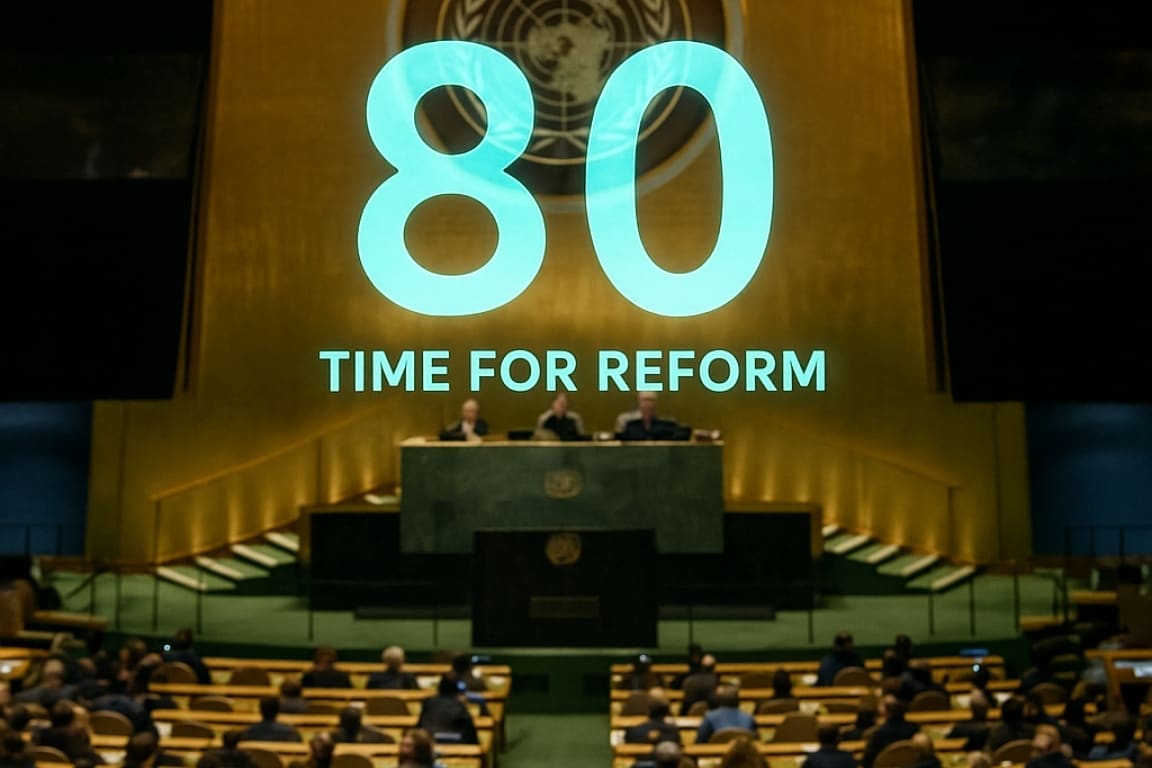I’ll start by returning to a subject I broached in this earlier Substack Post, Finding Success for the BRICS+, where I raised questions over the impact at the conclusion of the Conference on Financing for Development:
“Just concluded in Seville Spain is the 4th International Conference on Financing for Development (FfD4). As noted by SDSN, The UN Sustainable Development Solutions Network (SDSN) which operates under the auspices of the UN Secretary-General, and designed to mobilize a network to drive action on the Sustainable Development Goals (SDGs) and the Paris Agreement on Climate Change this summit gathering is designed to”:
-
Adequately finance the UN system;
-
Increase financing for the Sustainable Development Goals (SDGs);
-
Increase their financing of the global commons; and
-
Agree on reforms of the international financial markets to ensure that savings flow to the poorer countries in the world.
According to author, Minh-Thu Pham, a nonresident scholar in the Global Order and Institutions Program at CEIP, in an article titled: “The Compromiso de Sevilla Marks a New Path for Development Finance”:
“At the outset of FFD4, the four co-facilitators—Mexico, Nepal, Norway, and Zambia—agreed that the AAAA [Addis Ababa Action Agenda] and the September 2024 UN Pact for the Future, which contained language committing to reforming international financial architecture, must be the minimal level of agreement in Sevilla.”
“The ultimate document they produced underscores a collective obligation to advance development, rather than a mere bargain between the Global North and South. Indeed, the very name—Compromiso de Sevilla—signals this distinction: While English speakers might hear “compromise” in the Spanish “compromiso,” the word actually means “commitment,” a linguistic nuance that captures the document’s aspirational rather than merely transactional character.”
She goes on further to argue:
“Despite some disappointments, the Compromiso de Sevilla is a major win for the Global South, particularly developing countries most vulnerable to economic shocks. It marked the emergence of a new path for international cooperation, based on three principles: maximizing development impact, giving Global South countries greater voice and influence over financial and debt structures, and strengthening country leadership and country-led initiatives. The fact that an outcome was reached by consensus provides yet another signal that a new breed of multilateralism is emerging to meet the needs of the moment—albeit one without the United States.”
How does she see the outcome? Well, that seems pretty clear:
“Ultimately, the Compromiso de Sevilla is a substantive advance both for the Global South and the cause of multilateralism. Four key policy provisions stand out.”
“Lacking an effective global architecture for managing sovereign debt, the world’s poorest countries are paying more on servicing their debt than on health and education combined. Despite sharp North-South differences, negotiators reached agreement on important initiatives to lower debt burdens:
Creating a borrowers forum with a secretariat in the UN Conference on Trade and Development to provide borrowing states a platform to coordinate
Convening a new working group under the UN secretary-general, including the International Monetary Fund and World Bank, tasked with examining responsible borrowing and lending practices
Endorsing increased local-currency lending to reduce pressure in crises
Establishing a global debt registry housed at the World Bank
Calling for a strengthened G20 Common Framework
Agreeing on an intergovernmental dialogue at the UN on closing gaps in the debt architecture.”
Yet she is willing to see that in the end:
“As Zambia’s UN ambassador Chola Milambo declared, “at the end of the day, it’s going to be implementation that matters.” To build on the Compromiso de Sevilla, the Spanish hosts and the UN proposed a Sevilla Platform for Action to encourage partnerships between member states, civil society, and the private sector to announce initiatives to operationalize and execute specific elements of the agreement. The platform now includes over 130 initiatives, cutting across thematic areas, methods, and political coalitions. Collectively, they suggest increasing awareness that complex multilateral agreements need relentless follow-up efforts to become a reality. Some initiatives may fail, but through sheer volume of ideas and effort, others will have an impact. (Helpfully, the UN has created a digital registry of all initiatives under the Platform for Action.)”
As the International Institute for Sustainable Development (IISD) reviews and ultimately comments on the results of Seville:
“UN Member States have approved the outcome document of the Fourth International Conference on Financing for Development (FfD4) and transmitted it to the Conference for adoption. The ‘Compromiso de Sevilla’ recognizes the annual financing for development (FfD) gap of USD 4 trillion and launches “an ambitious package of reforms and actions to close this financing gap with urgency,” while catalyzing sustainable development investments at scale.”
The reality is that it is not the number of initiatives – as striking as they may appear to be – and the result here is 130 initiatives, but it is as the Zambian UN ambassador is quoted as saying, how much implementation of these initiatives occurs.
There are a multitude of initiatives notwithstanding the UN faces a $USD 4 trillion gap. And there is growing recognition of a deep financing crisis at its many institutions. As a result of UN80 the Secretary General Antonio Guterres has been seeking a 20 percent reduction in its workforce and consolidations wherever possible.. As Colum Lynch of Devex made clear:
“The U.N.’s financial future just got worse.
For weeks, the world body’s leadership has been plotting out plans for slashing funding and downsizing its workforce by at least 20%.”
“But the recent passage of a law clawing back more than $1 billion in U.S. funding to the United Nations for everything from peacekeepers to human rights promotion and nutritional supplements for children in conflict zones has made it clear it will have to dig deeper. And it coincides with a State Department announcement on Tuesday that the U.S is withdrawing from UNESCO.”
“The White House “rescissions” — provisions to cancel congressionally appropriated funds — would cut more than $361 million in funding for U.N. peacekeeping missions in Lebanon and the Democratic Republic of Congo, ballooning Washington’s already whopping peacekeeping arrears to about $1.8 billion, according to Better World Campaign. The U.N. maintains that the U.S. is legally obligated to pay its full share of peacekeeping costs.”
“A proposed House budget for fiscal year 2026 that is making its way through the House appropriations committee envisions even deeper cuts, capping peacekeeping funding at about $560 million, a roughly 54% cut from 2025. The funding for international organizations would drop from about $1.54 billion to $310.2 million. It would also prohibit funding for several U.N. agencies that are unpopular among Republicans, including UN Human Rights and the U.N. Relief and Works Agency for Palestine Refugees in the Near East.” …
“The package also targets another critical funding account, the international organizations and programs account, with over $450 million in voluntary U.S. funding for UNICEF ($142 million), the U.N. Development Programme ($81.5 million), UN Human Rights ($17.5 million) and the U.N. Office for the Coordination of Humanitarian Affairs ($3.5 million).”
The Trump administration’s latest action, as just noted above, is to announce that it is leaving UNESCO. As described by Lynch:
“In announcing its decision to leave UNESCO, a State Department spokesperson said the Paris-based agency’s recognition of the “State of Palestine” ran “contrary to U.S. policy” and contributed to anti-Israel rhetoric. The spokesperson also accused UNESCO of advancing “divisive social and cultural causes” at odds with the “America First” foreign policy.””
And as Lynch further points out these cuts and terminations have occurred before:
“The cuts are being imposed before the U.S. has even concluded its own long-awaited 180-day review of U.S. contributions to international organizations, and before Mike Waltz, president Trump’s nominee to lead the U.S. delegation at the U.N., has been confirmed by Congress and begins his work.”
So where does that leave the UN when it comes to trying to achieve the critical SDGs, Agenda 2030, the UN’s global development strategy:
“The 10th Edition of the Sustainable Development Report published just this past June features the updated SDG Index and Dashboards, which assess and rank all UN Member States on their performance across the 17 Sustainable Development Goals. It also introduces a new SDGi Index, focused on 17 headline indicators to measure overall SDG progress since 2015.”
“Despite these important gains”, as described by António Guterres Secretary-General of the United Nations, “conflicts, climate chaos, geopolitical tensions and economic shocks continue to obstruct progress at the pace and scale needed to meet the 2030 target. This year’s Sustainable Development Goals Report finds that only 35 per cent of SDG targets are on track or making moderate progress. Nearly half are moving too slowly and, alarmingly, 18 per cent are in reverse. We face a global development emergency.”
“Over 800 million people are trapped in extreme poverty and hunger. Carbon dioxide levels are at the highest in over two million years, and 2024 was the hottest year on record, surpassing the 1.5°C threshold. Peace and security have worsened, with over 120 million people forced from their homes, more than double the number in 2015. Meanwhile, debt servicing costs in low- and middle-income countries reached a record $1.4 trillion, squeezing resources needed for sustainable development.”
Likely all the nations will soldier on for the next five years at the UN trying to achieve the 17 goals. But let me make a suggestion. If implementation is the measure of success, maybe the preferred strategy for completing Agenda 2030 is to identify a priority group of SDG goals – a little like a return to the MDGs – but in this case say five goals. Then having chosen the ‘priority five’ the UN and all the members then put their collective energies on reaching the targets for those five goals. I would further suggest that the UN members choose, and then focus on this subset of five priority goals based, it seems to me, on those critical five where the data is most available and complete across all the members. The ‘priority five’ could enable national actors to track and report on implementation. Success could possibly then breed success. And if the UN and the national actors could accept that there was overreach with the 17 targets and Agenda 2030 – and course correct, well maybe success is still possible.
Anyway it’s a thought.
Epilogue: ProJune 26, 2025, marks 80 years since the signing of the UN Charter. The UN Secretary-General launched the UN80 Initiative to modernize the organization and address emerging global challenges.

